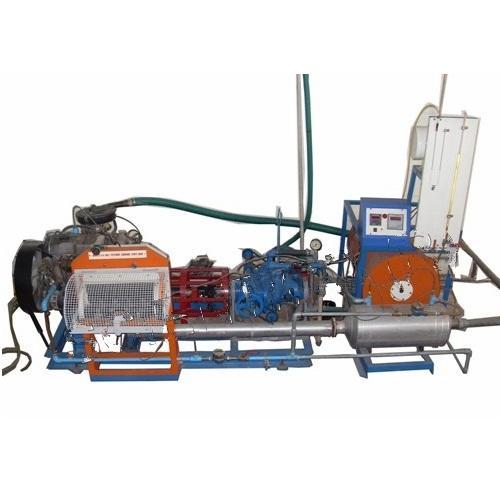Understanding Thermodynamics Basics
Thermodynamics basics is a fundamental aspect of science that explores the relationships between heat, energy, and work. This field plays a critical role in various applications, from engineering to physical sciences, and is essential for understanding how energy systems function.
Thermodynamics is a branch of physics that deals with the study of energy and its transformations, particularly in relation to heat and work. It provides a framework for understanding and analyzing the behavior of systems that involve the transfer of energy.
The fundamental principles of thermodynamics are based on a few key concepts:
-
System and Surroundings: In thermodynamics, a system refers to the portion of the universe that is under consideration, while the surroundings encompass everything outside the system. The system and surroundings are separated by boundaries, which can be real or imaginary.
-
Energy: Thermodynamics is concerned with the various forms of energy, including heat, work, and internal energy. Heat refers to the transfer of thermal energy between two objects or systems due to a temperature difference. Work, on the other hand, is the transfer of energy due to a force acting through a distance. Internal energy is the sum of the microscopic forms of energy (such as the kinetic and potential energies of atoms and molecules) within a system.
-
Laws of Thermodynamics: Thermodynamics is governed by a set of fundamental laws that describe the behavior of energy and its transformations. The four laws of thermodynamics are:
a. First Law of Thermodynamics (Law of Energy Conservation): It states that energy cannot be created or destroyed in an isolated system. The change in the internal energy of a system is equal to the heat added to the system minus the work done by the system.
b. Second Law of Thermodynamics: This law introduces the concept of entropy, which is a measure of the disorder or randomness in a system. It states that the total entropy of an isolated system tends to increase over time. It also gives rise to the concepts of heat flow from hot to cold objects and the irreversibility of certain processes.
c. Third Law of Thermodynamics: It states that as the temperature of a system approaches absolute zero (0 Kelvin), the entropy of the system approaches a minimum value. This law provides insights into the behavior of systems at very low temperatures.
d. Zeroth Law of Thermodynamics: This law establishes the concept of temperature and thermal equilibrium. It states that if two systems are separately in thermal equilibrium with a third system, they are also in thermal equilibrium with each other.
-
Thermodynamic Processes: Thermodynamics involves the study of various processes that systems can undergo. Some common processes include isothermal (constant temperature), adiabatic (no heat transfer), isobaric (constant pressure), and isochoric (constant volume) processes. These processes can be analyzed using thermodynamic equations and principles.
Thermodynamics has numerous applications in various fields, including engineering, physics, chemistry, biology, and environmental science. It provides the foundation for understanding and designing energy conversion systems, such as engines and refrigerators, and plays a crucial role in many technological advancements.
LABORATORYDEAL India maintains a good quality assurance of all its products and provides lab equipment at affordable and eco-friendly rates. The company provides lab equipment throughout and outside the country and has a network of dealers and distributors in various states, including Andhra Pradesh, Arunachal Pradesh, Assam, Bihar, Chhattisgarh, Goa, Gujarat, Haryana, Himachal Pradesh, Jharkhand, Karnataka, Kerala, Madhya Pradesh, Maharashtra, Manipur, Meghalaya, Mizoram, Nagaland, Odisha, Punjab, Rajasthan, Sikkim, Tamil Nadu, Telangana, Tripura, Uttar Pradesh, Uttarakhand, and West Bengal
The study of thermodynamics is divided into several key laws, each defining different principles about energy and its interactions. Among the most important laws are the First Law of Thermodynamics, which states that energy cannot be created or destroyed, only transformed from one form to another. This principle underlines the concept of conservation of energy, which is critical in analyzing any energy system.
Next is the Second Law of Thermodynamics, which introduces the concept of entropy. This law asserts that in any energy exchange, if no external work is done, the total entropy of a closed system will always increase. This is essential for determining the direction of processes and understanding why certain reactions occur spontaneously.
The Third Law of Thermodynamics provides insights into the behavior of systems as they approach absolute zero temperature. It states that as the temperature approaches absolute zero, the entropy of a perfect crystal approaches a constant minimum. This law is pivotal for understanding low-temperature physics and the behavior of materials under extreme conditions.
Thermodynamics also involves various important concepts such as heat transfer modes: conduction, convection, and radiation. In conduction, heat transfer occurs through direct contact between materials. In convection, heat is transferred by the movement of fluids, whether gases or liquids. Radiation is distinct as it involves the transfer of energy through electromagnetic waves, allowing heat transfer through a vacuum.
Real-world applications of thermodynamics are abundant. In engineering, it helps design engines, refrigerators, and air conditioning systems, ensuring they operate efficiently and meet desired performance criteria. In chemistry, thermodynamics provides insights into reaction spontaneity and equilibrium, influencing everything from industrial manufacturing to biological processes.
The field of thermodynamics is not only limited to physical applications but extends into modern technologies as well. For instance, thermodynamic principles are vital in understanding the performance of power plants, efficiency of heat engines, and the design of various thermal systems essential for daily life.
Additionally, thermodynamics basics are critical in environmental science. Understanding energy balance, heat transfer, and the impacts of energy systems on the environment is vital for developing sustainable technologies and addressing climate change challenges.
In summary, gaining a solid grasp of thermodynamics basics is imperative for anyone interested in science and engineering disciplines. This understanding will foster better insights into how energy flows and transforms, leading to innovation and advancements in various fields.









